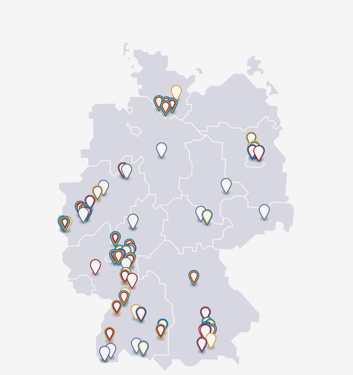Tamper evidence: More safety for patients
Patients must be sure that they are protected from falsifications whenever they buy or order medicines from legal pharmacies. Hence, the production and distribution of medicines is subject to some of the strictest controls imaginable. As of February 2019, two additional packaging features are going to make prescription drugs safer still. One of them is protection against tampering and the other individual pack numbers. The companies who are members of the vfa (German Association of Research-Based Pharmaceutical Companies) are about to change their packs accordingly.

This pack features a tamper-evident seal that tears into shreds when opened.
In future, prescription medicines need packaging that cannot be opened and closed without leaving a trace. This ensures that possible manipulations of the content do not take place or are noticeable. There is, after all, the potential risk that criminals get hold of an original pack, exchange the content for falsified medicines and return it to the supply chain. Manufacturers may however even use tamper-evident packaging for non-prescription drugs.
What the rules say
There is no rule without an exception; this principle applies here too. Some prescription medicines are exempt from the rules, i.e. the packs do not need to feature the pack number and a tamper-evident seal. These are homeopathy medicines, allergen extracts, contrast agents, medical gases, radionuclides, solutions for parenteral nutrition and eight other small product groups. On the other hand, whilst being non-prescription, certain stomach drugs must also feature the identifiers. The drug authorities may, over time, change the list of medicines for which tamper-evident seals are mandatory.
One principle, many solutions
It is up to the manufacturers themselves to decide what type of tamper-evident packaging or original seal - as it is called in the packaging industry - to use for the packaging of specific medicines. It is, for example, possible to stick a kind of seal across the carton flap, which would need to be torn or broken by anyone trying to open it. Another option is a glued flap of the kind that is frequently used in the food industry. In such cases, the flap must either be torn off where it is glued or a line of micro-perforations has been stamped onto the packaging alongside which it can be opened.
Many manufacturers are already using the safety mechanism on some of their medicines in order to protect them from manipulations. After all, the use of tamper-evident technology for medicines is not altogether new. As early as 2013, following an initiative of the German DIN Institute for Standardisation, experts from the pharmaceutical and packaging industry, from universities and consumer associations agreed on Europe-wide minimum technical standards to ensure protection against tampering. These contain advice for packaging suppliers and pharmaceutical companies telling them what to look out for when applying the respective technical solution that they have chosen. For example, the removal of tamper-evident packaging must always leave the pack with some visible damage irrespective of whether seals, bonding or foils are used. Currently there are discussions as to whether this should be turned into a worldwide standard.

This pack features micro-perforations that tear when the flap is opened.
When the new packs arrive at the pharmacies
The first packs with tamper-evident features and individual pack numbers may arrive at pharmacies before 9 February 2019; others will be available from pharmacies in the subsequent months because all medicines that were licensed for distribution prior to 9 February may still be sold until their use-by date.
Out of the approx. 1.4 billion packs of medicines sold by German pharmacies each year, more than half contain prescription drugs and are therefore – roughly speaking – subject to the new regulation. The changes that the pharmaceutical companies must undertake are costly. They need to invest huge amounts in order to design and produce packaging with the new safety features. The investment volume of an average-sized, large drug producer with a Europe-wide distribution network amounts to hundreds of millions.



